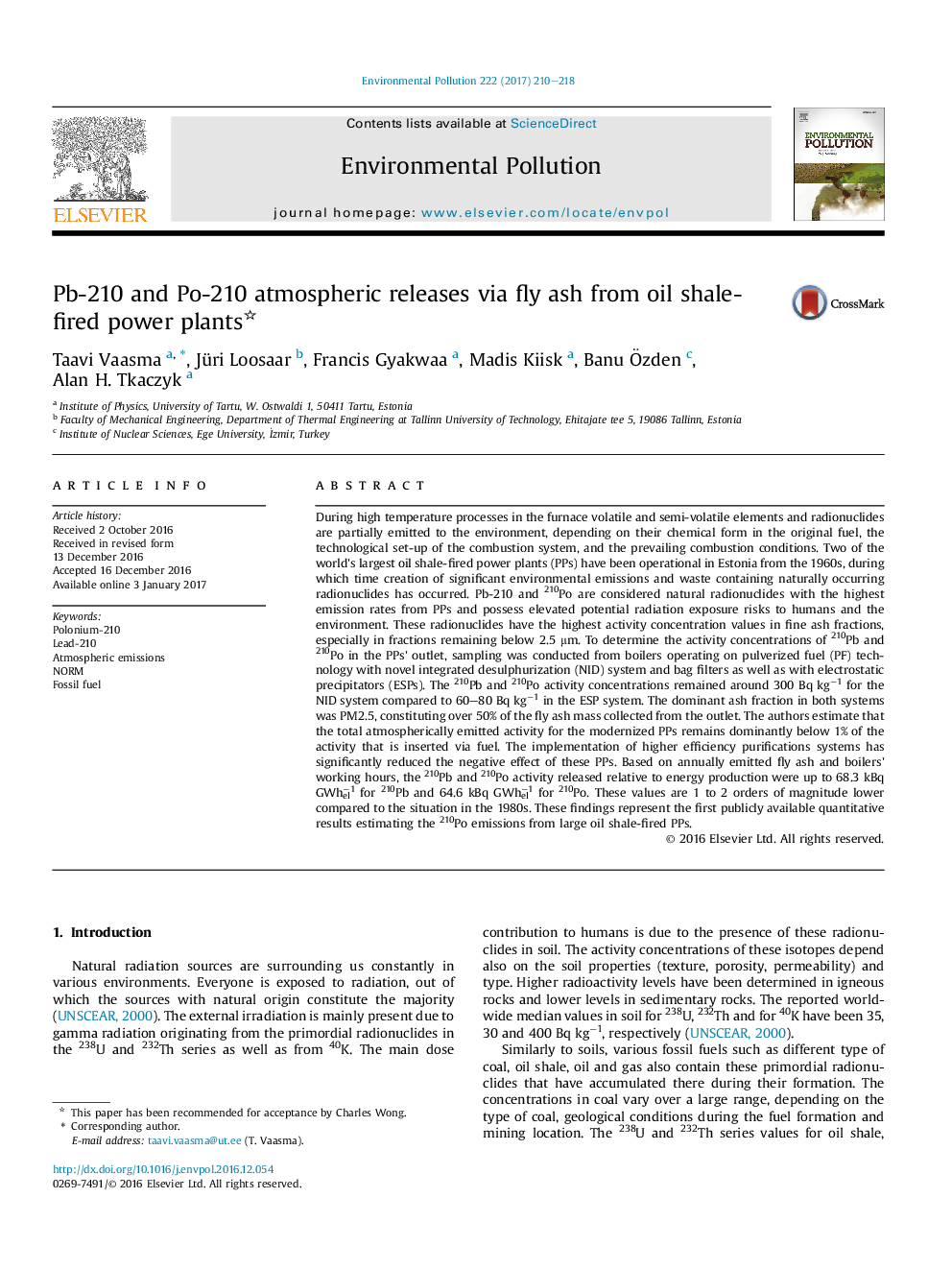| کد مقاله | کد نشریه | سال انتشار | مقاله انگلیسی | نسخه تمام متن |
|---|---|---|---|---|
| 5749013 | 1619151 | 2017 | 9 صفحه PDF | دانلود رایگان |

- Oil shale-fired PPs are emission sources of natural radionuclides to the environment.
- PM2.5 is the dominant fly ash fraction emitted from two types of combustion boilers.
- Pb-210 and Po-210 values are up to 6 times higher in NID ashes compared to CFB ashes.
- Current Pb-210 and Po-210 emissions are significantly reduced compared to 1980s.
- Radionuclide emissions from oil shale and modern coal PPs are in the same range.
During high temperature processes in the furnace volatile and semi-volatile elements and radionuclides are partially emitted to the environment, depending on their chemical form in the original fuel, the technological set-up of the combustion system, and the prevailing combustion conditions. Two of the world's largest oil shale-fired power plants (PPs) have been operational in Estonia from the 1960s, during which time creation of significant environmental emissions and waste containing naturally occurring radionuclides has occurred. Pb-210 and 210Po are considered natural radionuclides with the highest emission rates from PPs and possess elevated potential radiation exposure risks to humans and the environment. These radionuclides have the highest activity concentration values in fine ash fractions, especially in fractions remaining below 2.5 μm. To determine the activity concentrations of 210Pb and 210Po in the PPs' outlet, sampling was conducted from boilers operating on pulverized fuel (PF) technology with novel integrated desulphurization (NID) system and bag filters as well as with electrostatic precipitators (ESPs). The 210Pb and 210Po activity concentrations remained around 300 Bq kgâ1 for the NID system compared to 60-80 Bq kgâ1 in the ESP system. The dominant ash fraction in both systems was PM2.5, constituting over 50% of the fly ash mass collected from the outlet. The authors estimate that the total atmospherically emitted activity for the modernized PPs remains dominantly below 1% of the activity that is inserted via fuel. The implementation of higher efficiency purifications systems has significantly reduced the negative effect of these PPs. Based on annually emitted fly ash and boilers' working hours, the 210Pb and 210Po activity released relative to energy production were up to 68.3 kBq GWhelâ1 for 210Pb and 64.6 kBq GWhelâ1 for 210Po. These values are 1 to 2 orders of magnitude lower compared to the situation in the 1980s. These findings represent the first publicly available quantitative results estimating the 210Po emissions from large oil shale-fired PPs.
299
Journal: Environmental Pollution - Volume 222, March 2017, Pages 210-218